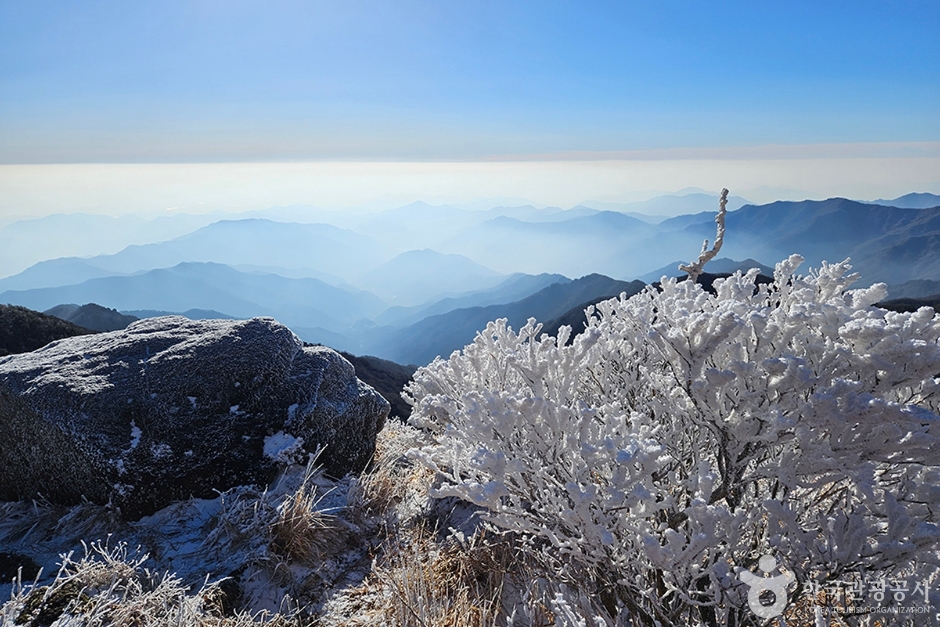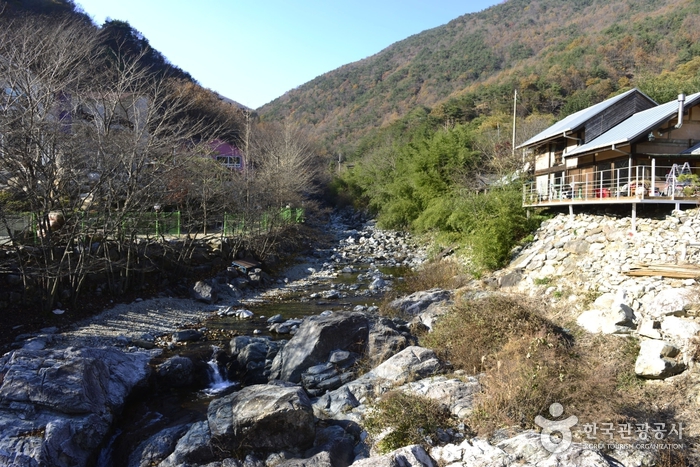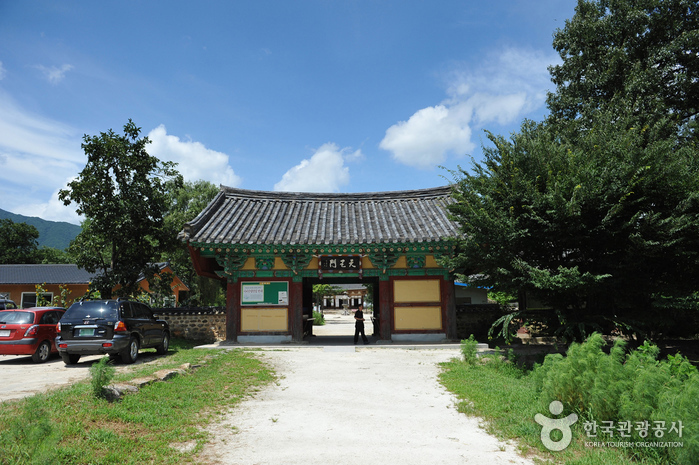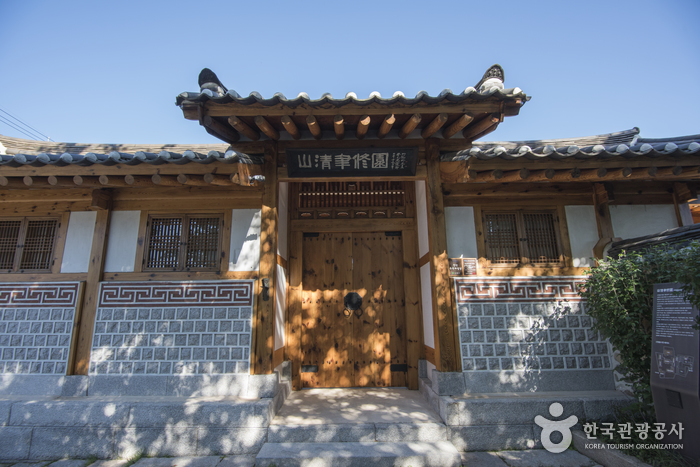Pico Cheonwangbong del Monte Jirisan (지리산 천왕봉)
16.8Km 2025-03-27
Jirisan-daero, Sicheon-myeon, Sancheong-gun, Gyeongsangnam-do.
A fecha del 27/03/2025, en esta región hay incendios forestales.
* Para información actualizada en tiempo real sobre la situación, consulte en los siguientes sitios web en inglés:
- Servicio de Bosques de Corea: https://fd.forest.go.kr/ffas/pubConn/movePage/english.do
- Portal de Desastres Naturales y Seguridad: http://eng.safekorea.go.kr/main/selectMainMng.do
Junto con los montes Geumgansan y Hallasan, Jirisan es conocida como una de las montañas más sagradas de Corea. Su nombre viene dado porque se creía que era un lugar que convertía a los inocentes en sabios. El monte Jirisan, localizado al sur, es una de las cinco montañas que rodea la antigua capital del reino de Silla. El 29 de diciembre de 1957, el lugar fue declarado el más grande y primer Parque Nacional del país. Sus 440.517 ㎢ cubren Hadong, Sancheon y Hamyang en la provincia de Gyeongsangnam-do, Gurye en la provincia Jeollanam-do y Namwon en Jeonbuk-do. Su área es siete veces mayor que el Parque Nacional del Monte Gyeryongsan.
Con 1.915 m de altura, Cheongwangbong es el segundo pico más alto de Jirisan. Desde Cheonwangbong inician algunos valles como Chilseon, Tongsin, Cheonwang y Jungsan. La gran roca en la cima parece como si estuviera sosteniendo el cielo. La salida del sol desde Cheongwanbong es tan bonita que una antigua tradición coreana dice que una vista está reservada para las personas cuyas familias realizaron buenas acciones durante 3 generaciones seguidas.
Valle Baegundong en Sancheong (백운동계곡(산청))
16.8Km 2021-02-08
Baegun-ro 51-beongil, Danseong-myeon, Sancheong-gun, Gyeongsangnam-do.
El valle de Baegundong era el área favorita del maestro Jo Sik en el monte Jirisan. Este maestro fue un gran metafísico de la época de Joseon, quien dejó varios registros de gran importancia, relacionados al paisaje maravilloso del monte Jirisan. Según los textos históricos, el maestro hizo varios recorridos completos por la zona de Jirisan, y, durante el viaje, dejó mensajes grabados en las rocas, que afortunadamente siguen presentes hasta hoy en día. Para destacar alguno de los escritos, “desde lo alto de la cima, uno se queda asombrado por la maravilla que ofrece la naturaleza, su belleza es extraordinaria, pero aún así, el ser humano no la sabe apreciar ni valorar”.
Para llegar al valle, tendrá que seguir la Ruta Nacional 20, que recorre las calles de Jungsan-ri de Sicheon-myeon, distrito de Sancheong-gun. A 1 km de la encrucijada de Chiljeongsamgeo-ri, podrá ver el cartel del valle Baegundong. Siga la indicación del cartel y llegará al lugar. Entre los ríos Gyeonghogang y Deokcheongang se encuentra el pico Ungseokbong de la montaña, que fue el paisaje en el que se inspiró el maestro para dejar la moraleja “las aguas de los ríos no pueden pasar por encima de la montaña, ni esta es capaz de cruzarla”.
El otro gran espectáculo de este lugar es observar la corriente de las aguas, de los distintos ríos y lagos, que se entremezclan y se juntan. En particular, como en los alrededores se encuentran varias cascadas y saltos de agua, es el destino perfecto para las vacaciones de verano. Las cascadas de este lugar ofrecen un ambiente fresco y relajante, ideal para escapar del calor.
Templo Silsangsa en Namwon (실상사(남원))
17.3Km 2024-04-07
Ipseok-gil 94-129, Namwon-si, Jeonbuk-do.
Es un templo budista construido en el tercer año del rey Heungdeokwang del reino de Silla, esto es, en 828, por el monje Jeunggak Daesa. En el año 1700, el rey Sukjong restauró el templo, que había quedado completamente arruinado durante la Guerra de Jeongyujaeran, pero a los 19 años del reinado del emperador Gojong (1882), el lugar sufrió un gran incendio. Actualmente, es el templo budista con más tesoros regionales (17) y los tótems de piedra que se ven tras pasar el puente Haetalgyo.
Sancheongyulsuwon / 산청율수원
17.6Km 2025-08-12
36, Sindeunggahoe-ro Sindeung-myeon, Sancheong-gun, Gyeongsangnam-do
+82-55-974-0221, +82-10-9802-1132
Sancheong Yulsuwon was opened in October 2013 as traditional hanok accommodations to provide guests comfort and relaxation in nature. It was named after the expression from “Decade of Wen Wang” of the Classics of Poetry (the oldest existing collection of Chinese poetry), meaning “Following the virtue of ancestors, one should cultivate one’s mind,” in the hope that guests can experience traditional Korean culture in hanok and learn common themes and cultivate virtues in life. Located at the hanok street in Sancheong County, Gyeongsangnam-do Province, Sancheong Yulsuwon is a hanok stay facility established by Korea’s major education company JEI Corporation. It was built by expanding and renovating the Old House of Suncheon Park’s Clan for over four years. It is not only a hanok cultural facility but also an educational facility that aims to provide visitors comfortable relaxation and to establish a sound, rich environment of educational culture, which is also the philosophy of JEI Corporation. It is located around the Dumulmeori area where Dangyecheon Stream and Sindeungcheon Stream -- the water branch of Hwangmaesan Mountain (1,108m above sea level) -- meet. The area is known for many houses of noble families situated in a propitious site combined with mountains and water and as a hanok village with the old stone wall, which was designated as a cultural heritage. Among them, Sancheong Yulsuwon is an outstanding hanok structure built on a total area of about 2,975m2 according to the theory of divination based on topography.
Entering the main gate Yeongsumun, one sees the Anchae (inner house) situated in front, the outer Sarangchae (detached building) on the right, and the bathroom on the left. Then, there are the inner Sarangchae, the kitchen, and the pavilion around the vegetable garden and the pond. The arrangement of buildings has special meaning: the kitchen signifies a green dragon (east), the bathroom, a white tiger (west), the inner Sarangchae, an Ansan (a low and small mountain in front of the house), and the outer Sarangchae and the main gate, a Josan (a high mountain behind Ansan); these five buildings seem to embrace the Anchae. As for the special names of the buildings, the inner Sarangchae built with the splendid style of semi-hipped roof and double eaves was named “Nongam,” meaning “a thatched cottage of a skilled farmer”; the outer Sarangchae was named “Goheon,” meaning “an old sarangchae,” and the Anchae -- named “Hagyejae” meaning “modesty” -- is situated in the innermost area. In particular, its upper floor (numaru) offers an open view of the environment. The bathroom, which was named “Seoljodang” meaning “one should keep the mind and body clean,” is composed of two connected houses. It is also equipped with red clay sauna and jjimjilbang (Korean dry sauna).
Sancheong Yulsuwon was built based on a traditional hanok style of the Yeongnam area, with a splendid Seoul style of modernity added to the design. The sunshine comes through the windows made of hanji (Korean paper) in the clean and cozy rooms. Guests can also enjoy the outside view from the windows, which show the typical scenery of hanok consisting of jars, trees, flowers, and low stone wall with tiled roof. Every room is equipped with a bathroom including a bathtub and a modern-style kitchen. Sancheong Yulsuwon is adjacent to various tourist attractions including the following: valley of Daewonsa Temple surrounded by Geumgang pine trees; Namsa Yedamchon village, a village with an old wall made of red clay and stones; and Jeongchiwam Hermitage, Traditional Buddhist Temple No. 83 built by Silla’s Buddhist monk Uisang (625-702) and where the Buddhist Painting of Mountain Spirit can be found.




 Español
Español
 한국어
한국어 English
English 日本語
日本語 中文(简体)
中文(简体) Deutsch
Deutsch Français
Français Русский
Русский